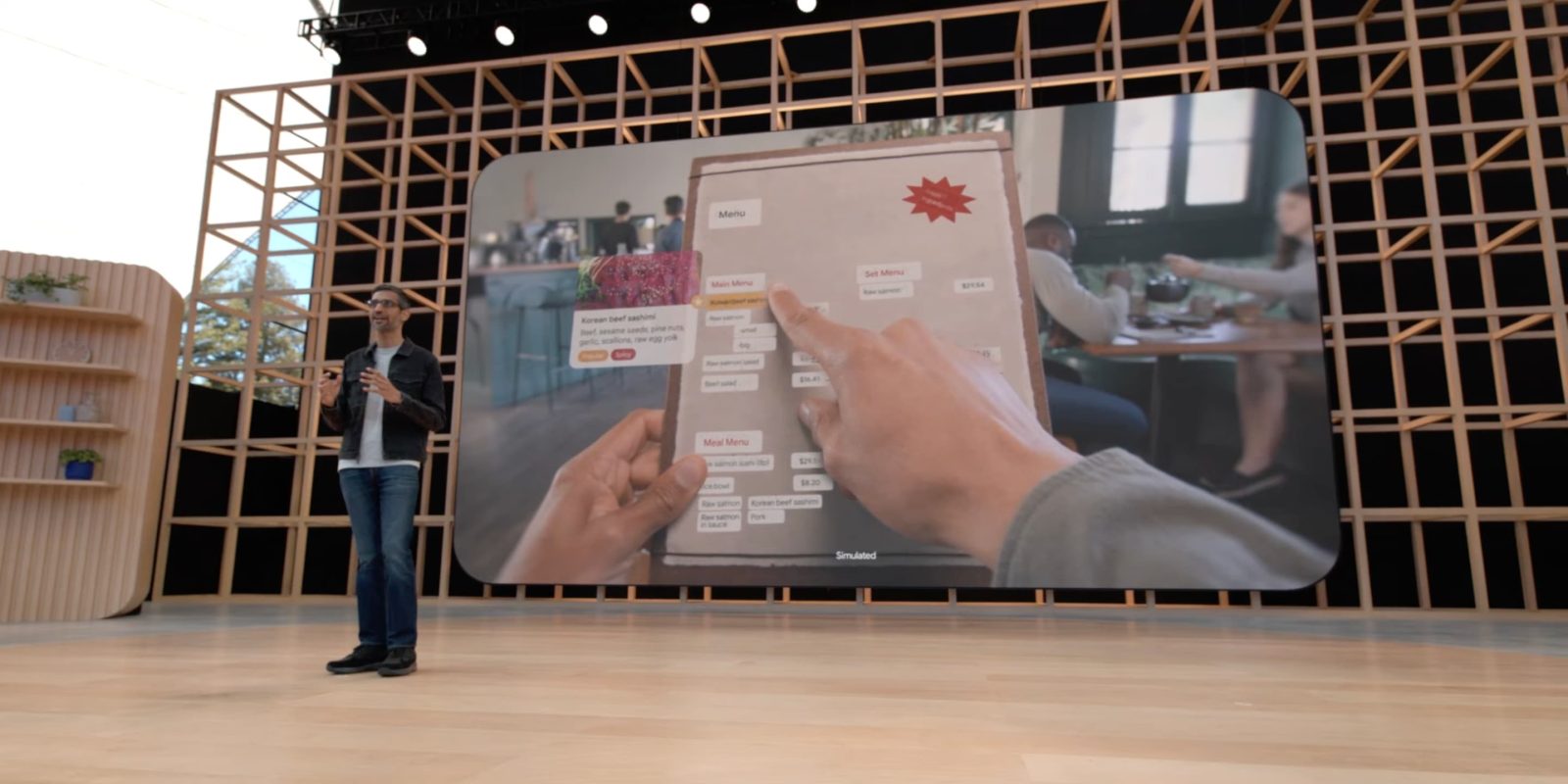
Google not being at the forefront of augmented reality is a real shame. With Glass, Cardboard, and Daydream in the mid-2010s, Google seemed well on its way to owning the next form factor. All those efforts are dead.
Instead, Meta is the one to offer a range of headsets, while Apple is weeks away from shipping Vision Pro. Additionally, Ray-Ban Meta glasses appear to be having a moment, which could have very well been Google’s if they kept iterating on a consumer version of Glass. (In short, point-of-view photos and videos are compelling, especially when paired with object recognition, even if results are just audio-only or on your phone. Meanwhile, the appeal of glasses offering hidden headphones shouldn’t be ignored.)
AR/VR/XR/MR wearables are the future. Glasses are the only form factor that has a chance of taking over the smartphone as people’s main device. In fact, it might go further than that, as floating screens (and virtual keyboards) might even replace laptops and desktops. Frankly, I think controlling the next form factor is more important than the current race of adding AI to everything.
All I want in 2024 is for Google to announce and detail a coherent vision for AR.
I thought we were there in 2022 when Google ended I/O with a teaser about its work in augmented reality. None of those announcements materialized into anything as later reports noted that Google apparently pivoted from the demo.


Google’s own internal hardware effort looks to have been sidelined for an Android OEM model. That should start with a Samsung XR headset (and later glasses) that’s powered by a Qualcomm chip and runs a special version of Android. That was teased at the start of 2023, and it seemed we would get an update later in the year.
That update did not happen at I/O or at any other event. It seems the Apple Vision Pro announcement caused Samsung to delay its device to allow for better specs. It’s a shame that the move seemingly delayed the announcement of Android XR. (The team putting all its effort into XR could explain why Android 14 was a pretty quiet release.)

Building for this form factor inherently has a long lead time. Ideally, Google would announce the platform and tools at I/O in May so that developers can start building apps ahead of a device launch in the fall. Hopefully, that’s how 2024 will play out.
At that announcement, Google needs to show its first-party services in AR. We need to see Android XR’s productivity and entertainment use cases, including watching media and gaming. Is there going to be a desktop-class version of Chrome? Are we going to find out that Android’s freeform desktop mode has really been for this spatial form factor, or is there going to be some ChromeOS integration, like Vision Pro and macOS?
The OEM model is one that Android knows well, and maybe that’s fine for a headset. However, I feel like glasses should be entirely Made by Google. It’s critically important to offer a fully integrated hardware and software experience, just like Pixel phones.
One of the reasons Google Glass ultimately failed was because the technology wasn’t ready. However, the one thing it got really right was its original “One Day” concept video that shows how you would use glasses in your day-to-day life and what Google services would look like in such a future. Google’s AR efforts desperately need a modern version of that in 2024.
FTC: We use income earning auto affiliate links. More.


Comments